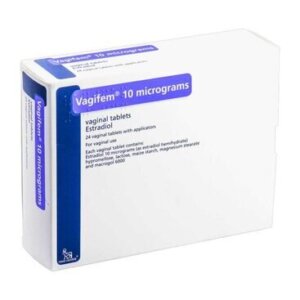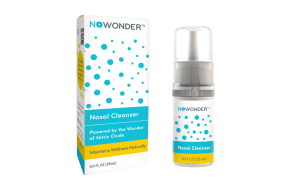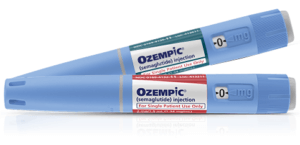For people facing the prospect of asthma returning after a quiet summer, September is often the toughest month of the year. Health systems, schools, and families prepare for an expected September spike in asthma cases (what is commonly called Asthma Peak Week) in the third week of September. That’s when emergency department visits and asthma-related hospitalizations surge. Multiple factors collide at once: the levels of seasonal allergens like ragweed pollen and mold start to spike, an upswing in respiratory viruses as school resumes, shifts in weather, and the stress of new routines.The encouraging news is that these changes are predictable so with advance planning, consistent medication routines, and smart environmental controls, many attacks can be prevented and symptoms kept under control.
Understanding asthma’s September spike
Asthma is a chronic airway disease characterized by inflammation, smooth muscle constriction, and excess mucus that narrow the breathing tubes. Triggers include allergens, irritants, infections, and stress. In September, these triggers stack up, creating a “perfect storm” for flare-ups.
- Environmental allergens: Ragweed pollen reaches peak levels in mid-September; mold counts rise as fallen leaves decompose and as humidity lingers. Both irritate sensitive airways and can set off coughing and wheezing.
- Respiratory infections: The return to school increases contact with viruses (cold viruses, flu, RSV, COVID-19), which are major drivers of asthma exacerbations.
- Indoor air quality at schools: Older buildings and tight indoor spaces may harbor dust, cleaning-product fumes, and moisture-related mold, all of which can worsen asthma.
- Extreme weather and wildfires: Hurricanes, heat waves, and wildfire smoke can degrade air quality and provoke symptoms, sometimes across vast regions downwind from fires.
- Medication gaps: Many people relax their routine over summer and discover in September that controller use has fallen off or rescue inhalers have expired.
Historical data highlights the impact of these:
- Roughly 25% of pediatric asthma hospitalizations occur in September
- Viral infections account for an estimated 80% of attacks in children and 50% in adults, contributing to millions of missed school and work days.
A game plan for handling asthma at home
A strong plan blends medical therapy with practical lifestyle steps. The goal is prevention first, early action second. If you already know that asthma is a danger, or if it runs in your family, take some proactive steps to prepare an Asthma Action Plan for what may be around the corner:
- Book an early review visit: Meet a doctor ahead of September to confirm control, review inhaler technique, and update the plan.
- Use controller medications consistently: Daily inhaled corticosteroids or combination controllers can only work if taken as prescribed. Do not wait for symptoms to appear.
- Keep quick-relief within reach: Check that rescue inhalers have not expired; carry them to school, practice, and work. Consider a spare for school or the gym.
- Upgrade indoor air: Run HEPA-certified air purifiers in bedrooms and main living spaces; use HVAC filters with high efficiency ratings; control indoor humidity; and close windows on high-pollen days.
- Reduce exposure to allergens: Track daily pollen and mold reports, shower after outdoor activities, leave shoes at the door, and wash bedding regularly in hot water.
- Prevent infections: Wash hands often, avoid close contact with sick people, and consider masking in crowded indoor spaces during local surges or when wildfire smoke degrades air quality.
- Support general health: Prioritize sleep, hydration, balanced nutrition, and regular, appropriate exercise; these improve resilience to stressors.
- Coordinate with schools: Provide the school with your written action plan, lists of medications, and contact information.
Vaccinations: a preventive layer against flare-ups
Respiratory infections drive many asthma flare-ups. Vaccination lowers the risk and the severity of illness. Annual flu and updated COVID-19 vaccines are recommended for most people ≥6 months of age; babies, older adults, certain pregnant people. Some with risk factors may benefit from RSV vaccination; and selected patients may benefit from pneumococcal vaccination. Because it takes about two weeks for protective immunity to develop, aim to vaccinate early in the season.
What to watch for, and how to respond quickly
Even with the best prevention, symptoms can emerge. The key is following the Asthma Action Plan and acting early in the “Yellow/Caution” zone to avoid the “Red/Danger” zone.
- Early warning signs: increased cough, nighttime awakenings, chest tightness, shortness of breath with routine activity, or a drop in peak flow readings if you track them.
- Yellow-zone steps: follow your plan’s instructions (often increasing reliever frequency and, if prescribed, stepping up controller therapy) and contact a clinician if symptoms persist.
- Red-zone/danger signs: struggling to speak, cyanosis (blue lips or fingertips), no improvement after reliever, or severe breathlessness. Seek emergency care immediately, call 911 or go to the ER.
School-specific tips during September
- Action plans on file: Give copies to teachers, coaches, and the school nurse; confirm where medications are stored and who can administer them.
- Daily symptom checks: Encourage reporting of cough, wheeze, or chest tightness; use a peak flow meter where available to catch changes early.
- Hygiene and attendance: Keep sick students home; teach correct handwashing and cough/sneeze etiquette.
- Classroom environment: Ask about cleaning policies, ventilation, and fragrance use; consider portable HEPA units for high-risk classrooms.
- Outdoor activity plans: Modify exercise on days with high pollen, poor air quality, extreme heat, or smoke; plan indoor alternatives.
Environmental realities: weather, wildfires, and storms
September overlaps with peak hurricane season and prolonged wildfire risk in several regions. Storms can introduce mold from water damage, shifting humidity, and cleanup exposures; wildfires can degrade air quality hundreds of miles away. When AQI is poor, shorten outdoor time, close windows, run HEPA filtration, and consider well-fitting respirators (e.g., N95) for essential outdoor activity. After floods or leaks, dry and remediate water damage quickly to prevent mold growth.
Medication landscape: traditional pillars and newer options
Control of the expected September spike in asthma rests on a personalized combination of the following, guided by severity and pattern of symptoms:
- Reliever inhalers: short-acting beta agonists for acute bronchospasm.
- Controller therapy: inhaled corticosteroids (ICS) alone or in combination with long-acting bronchodilators for frequent or persistent symptoms.
- Allergen and irritant control: reduction of exposures to pollen, mold, dust mites, smoke, and fumes.
- Advanced options: for severe, eosinophilic, allergic, or steroid-dependent asthma, biologic therapies and other add-on strategies may be used under specialist care.
Treatment of asthma management is evolving and new options have emerged over the past few years. Low-dose budesonide combined with formoterol is now a preferred treatment for people with mild asthma. The FDA has approved the use of budesonide+formoterol as-needed. Older rescue inhalers supply short-acting beta-agonists (SABAs), which only provide short-term relief by quickly relaxing the airway muscles during an asthma attack. Newer treatments like Symbicort include a combination of a corticosteroid and a LABA (long-acting beta-agonist). This dual-action approach handles immediate symptoms but also targets inflammation. Budesonide opens the airways when symptoms appear, and the corticosteroid delivers anti-inflammatory controls to reduce the underlying problem. Using it as a long-term treatment means that people get more consistent doses of steroids over time.
What are the latest treatment guidelines for asthma?
Key updates to asthma treatment guidelines emphasize better care for mild asthma in adults and teens. Most people with asthma in these age groups are now advised to choose between two main treatments: taking a daily low-dose inhaled corticosteroid with a short-acting beta-agonist (SABA) as needed or using the low-dose budesonide and formoterol only when needed. Regular check-ups, shared decision-making, and proper education are also critical to help patients manage the condition.
Across all options, adherence and technique matter as much as the prescription. Reviewing inhaler use with a clinician or pharmacist before September can pay off throughout the fall.
Buy asthma medications at the right price from a reliable source
Even the largest US pharmacies have difficulty stocking their shelves with the medication your doctor prescribes, and selling it at a competitive price. This is especially the case when it comes to asthma therapies, because doctors often choose to treat younger patients with brand-name medications from known manufacturers that they have grown familiar with and trust, rather than cheaper generics from unknown sources. This can end up with you having to pay for the medication (or a big slice of the cost) to cover the difference between the insurer’s standard cover and the pharmacy’s bill (the copay or gap.)
IsraelPharm can supply both brand-name and generic asthma medications at far cheaper prices than US pharmacies, without compromising on medication quality or standards. This is because we are not locked-in to the US’s massive Health Insurance bubble that lately has been the subject of so much debate over the way that Pharmacy Benefit Managers are setting prices in a way that inflate consumer costs.
Here’s a comparison of the current prices charged by a popular US online source of medications with what IsraelPharm charges for exactly the same brand-name drugs, delivered to your door:
| Medication | Type | US online pharmacy | IsraelPharm |
| Ventolin | Rescue inhaler | $81 | $20 |
| Trelegy Ellipta | Inhaler for long-term treatment of asthma | $802 | $261 |
| Qvar | Inhaler for long-term treatment of asthma | $338 | $69 |
| Alvesco | Inhaler for long-term treatment of asthma | $238 | $66 |
| Pulmicort | Turbohaler for bronchial asthma. | $315 | $61 |
| Breo Ellipta | Inhaler for long-term treatment of asthma | $490 | $119 |
| Symbicort | Turbohaler for long-term treatment of asthma | $282 | $101 |
Turning preparation into protection
- A September spike in asthma is predictable: allergens, viruses, and environmental stressors combine, leading up to Asthma Peak Week.
- Prevention first: steady controller use, updated action plans, and quick-relief inhalers at hand reduce emergency visits.
- Environment matters: HEPA filtration, humidity control, and minimizing exposures help keep airways calm.
- Public health tools help: vaccination lowers risk and severity of respiratory infections that drive many flare-ups.
- Early action saves time and stress: respond in the Yellow zone; know Red-zone signs and seek emergency care when needed.
Frequently asked questions about asthma
Why does asthma peak in September?
The September spike in asthma happens mainly because several triggers stack up. Ragweed pollen and mold increase, people move indoors into shared spaces where viruses spread, weather swings can irritate airways, and school buildings may harbor dust and other irritants. This “stacking” of risks explains the spike in symptoms and hospital visits during the third week of September.
How can families reduce school-related asthma flare-ups?
Prepare an updated Asthma Action Plan, ensure access to rescue medication, and discuss the classroom environment and activity plans. Ahead of the September spike in asthma, teach symptom recognition and peak-flow monitoring where available. Keep sick students home to limit viral spread and reduce the chance of asthma exacerbations.
Which vaccines matter most for people with asthma?
Annual flu and updated COVID-19 vaccines are recommended for most people and reduce the risk of severe respiratory illness. Depending on age and risk factors, RSV and pneumococcal vaccines also offer protection. Get vaccinated early so immunity is in place before the seasonal surge.
What are the most effective environmental controls at home?
Use HEPA air purifiers in bedrooms and living areas, change HVAC filters regularly, control indoor humidity, close windows on high-pollen days, and shower after outdoor exposure. These steps reduce allergen load and help keep airways calmer during peak season.
What should someone do if a rescue inhaler isn’t helping?
If symptoms persist after using a rescue inhaler or breathing becomes markedly difficult, follow the Red-zone instructions in the action plan and seek emergency care. Red-flag signs include inability to speak full sentences, bluish lips or nails, and no improvement after reliever use.
Are stress and routine changes really asthma triggers?
Stress does not cause asthma, but it can amplify inflammation and make symptoms harder to control. The September spike in asthma comes from new schedules, academic pressures, and sleep disruptions. Combining stress-management basics, adequate sleep, hydration, balanced nutrition, and planned downtime, with steady medication routines helps blunt the effect.














